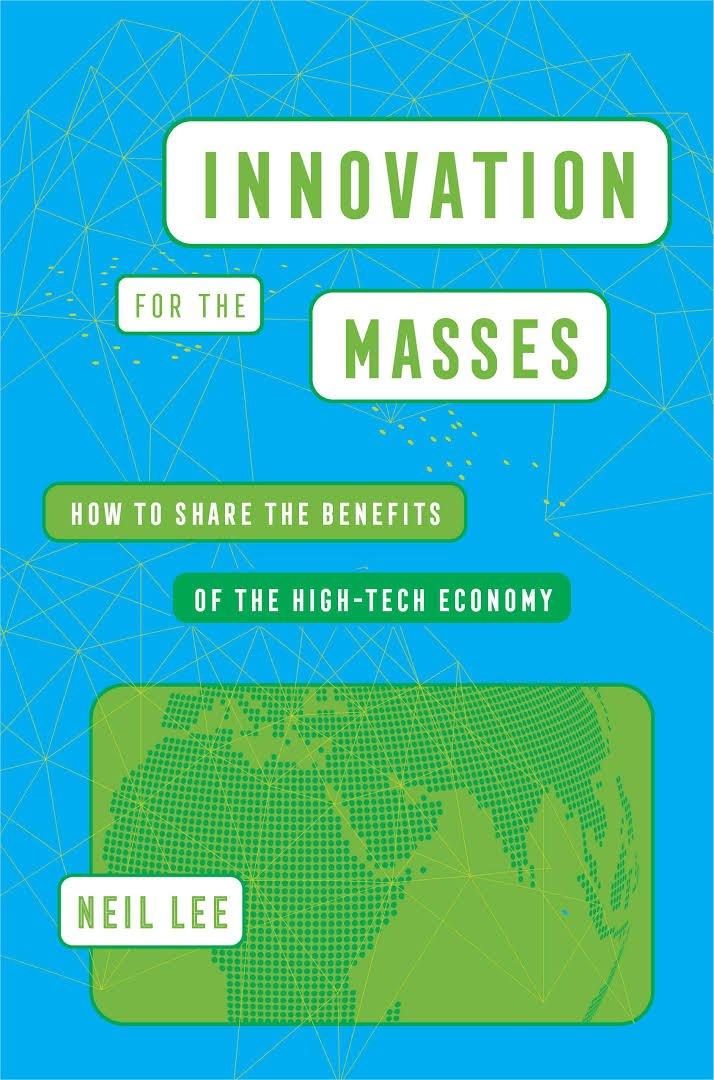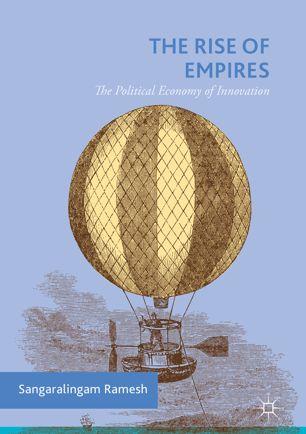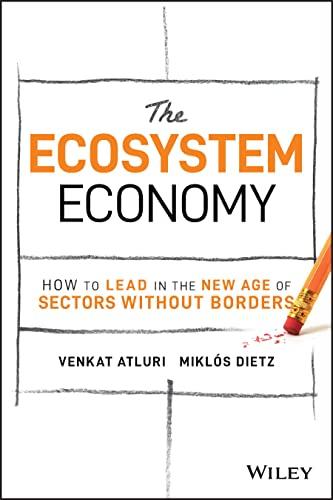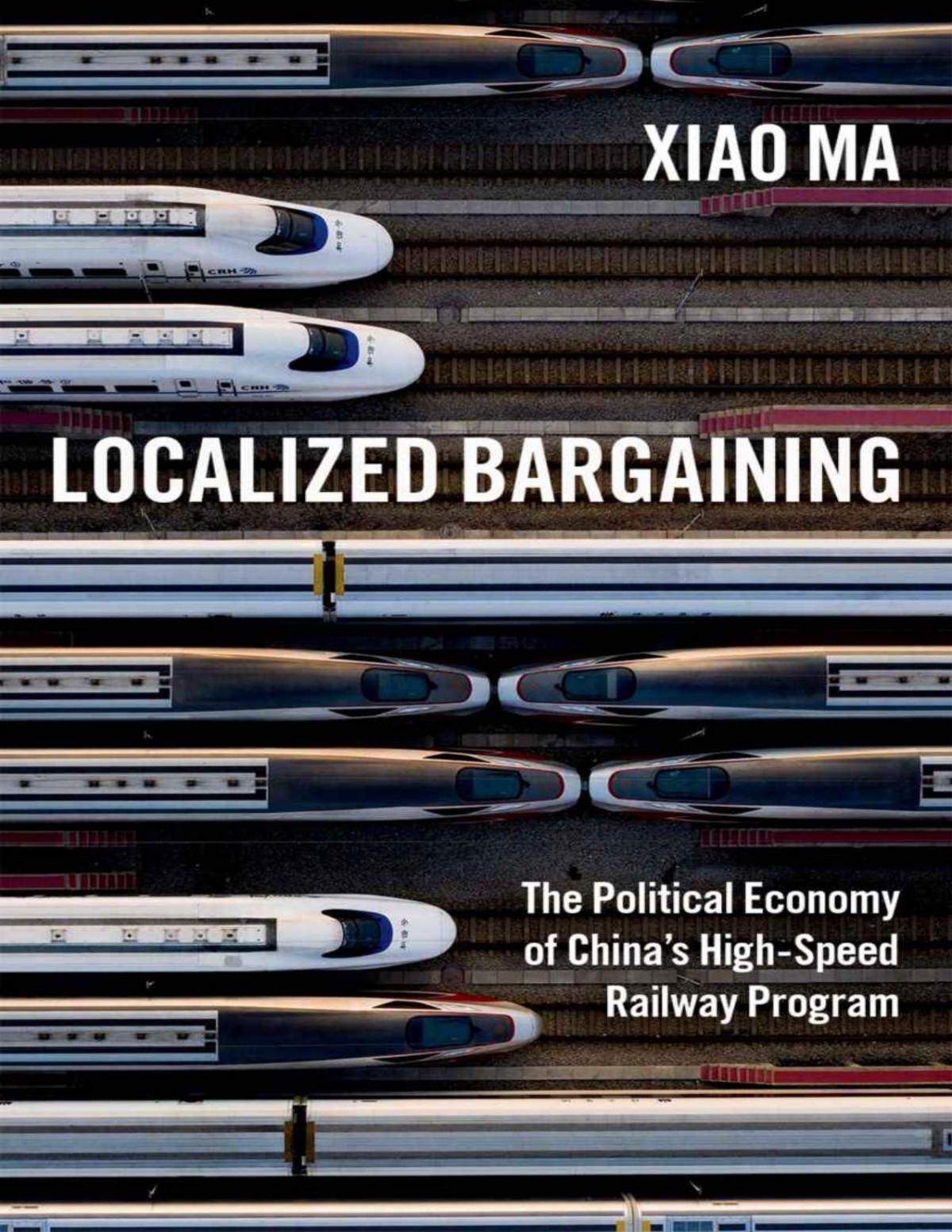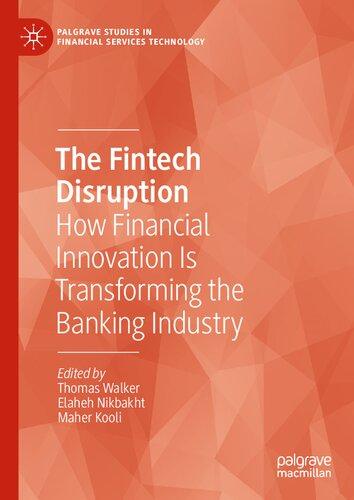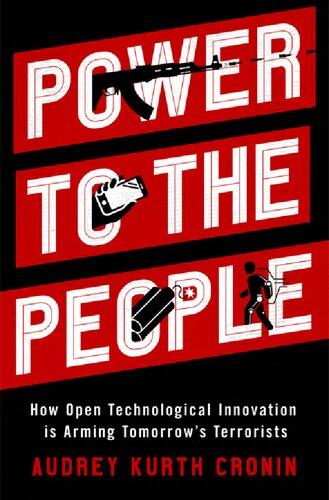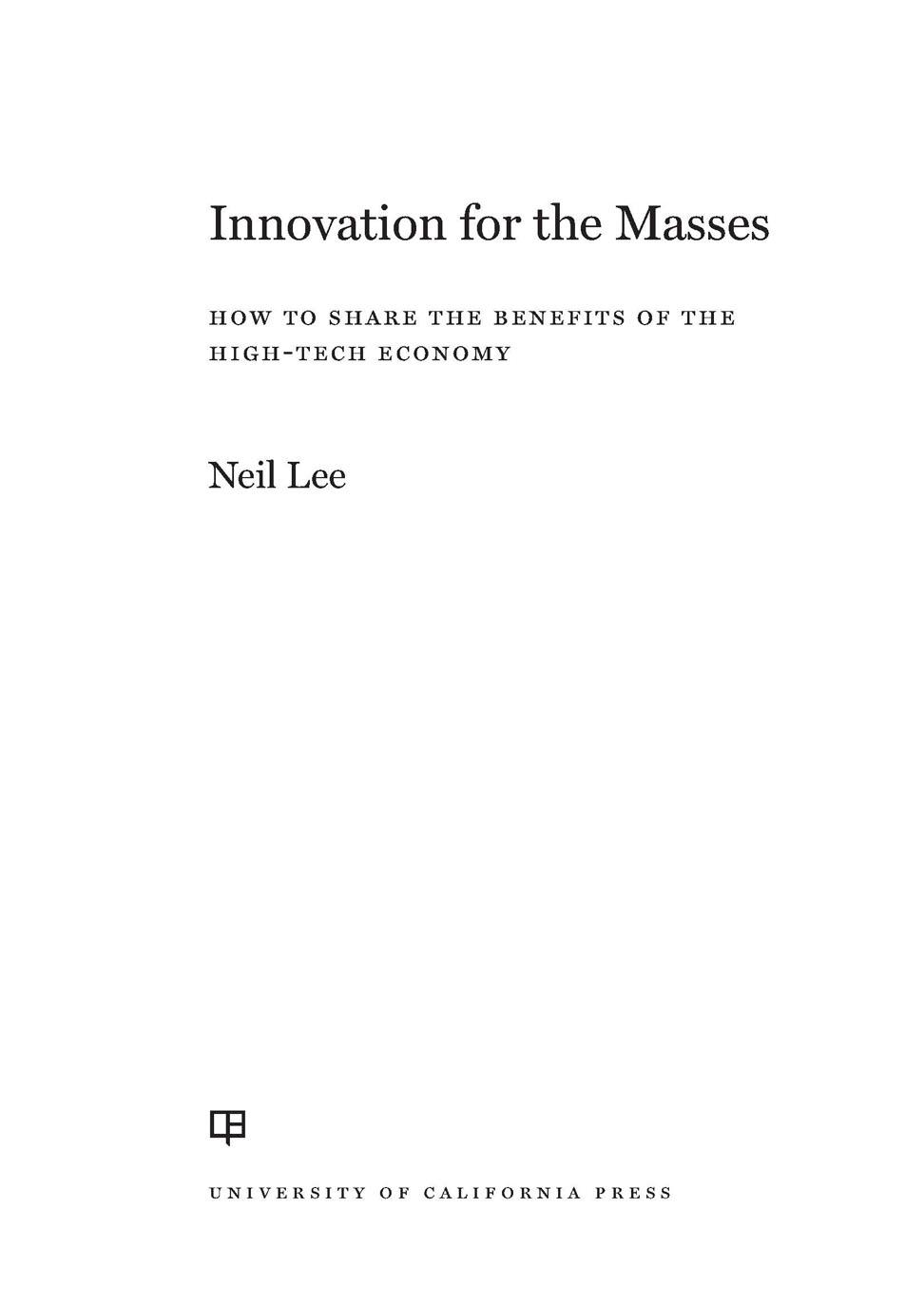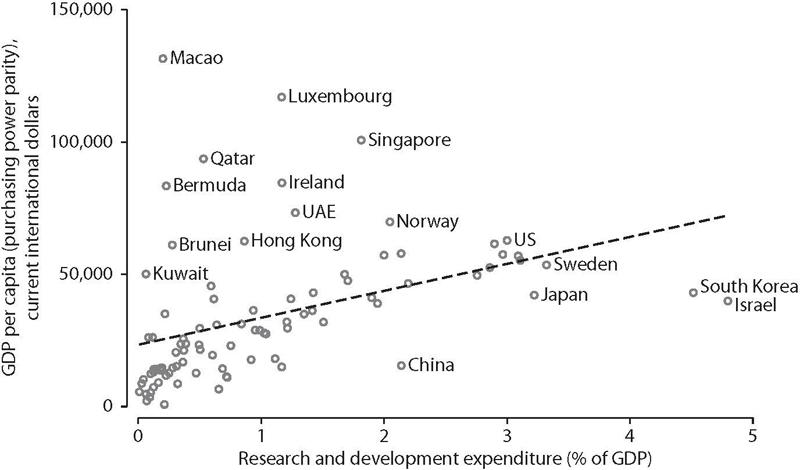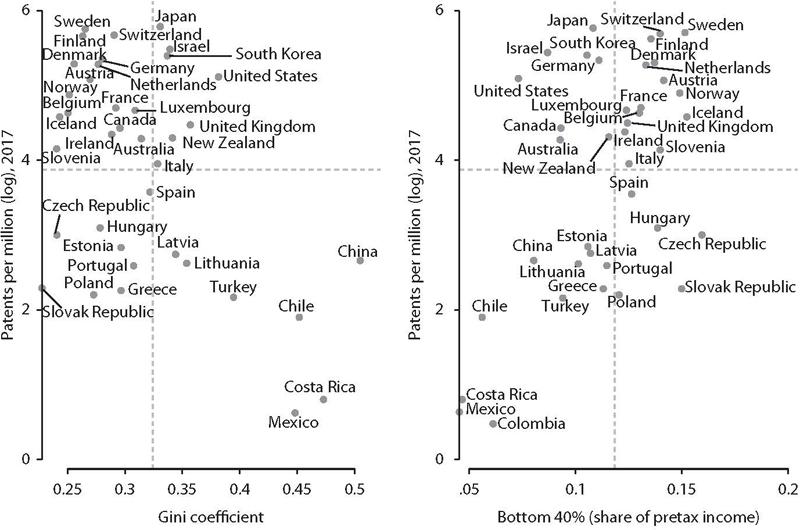Acknowledgments
This book came out of the COVID-19 pandemic. I’d intended to work on a very different topic, but the pandemic initially made travel or research impossible. With hindsight, its publication is one of the few silver linings of a difficult period. The research for it started more than a decade before the pandemic, during my PhD. It has had a long gestation, and I have accumulated many debts.
First of all, I’d like to thank everyone I interviewed while working on the book. This included over a hundred policymakers, representatives of organizations and firms, academics, and other experts. I’m immensely grateful for their honesty, openness, and insights.
My colleagues at the London School of Economics contributed hugely. David Soskice encouraged me to write
a book. Many of the themes developed in it come from our discussions and collaborations. My PhD supervisor, Andrés Rodríguez-Pose, has been a wonderful collaborator and friend. Simona Iammarino has also been influential in shaping my thinking. Michael Storper, Vasillis Monastiriotis, Riccardo Crescenzi, Erica Pani, Nancy Holman, and others in the LSE Geography and Environment Department have also been fantastic to work with.
The Cities group at the LSE’s International Inequalities Institute provided great discussion and critical insights. In particular, Frieder Mitsch, Andrew McNeil, and Max Herbertson read and commented on chapters, helped with data, and provided critical advice. Mark Fransham, Pawel Bukowski, Jingyuan Zeng, Joel Suss, Margarida Bandeira Morais, Bea Jambrina Canseco, Hilary Vipond, Liza Ryan, Tom Kemeny, Davide Luca, Sebastian Breau, Rania Ramli, Kirsten Sehnbruch, and Yorga Permana, among others, have been wonderful friends and colleagues. Kyung Lin Park, Javier Terrero-Dávila, and Owain Tsang-Wetherald were great research assistants. Paul Yu taught me loads about Taiwan, often at very short notice. Christy Yang, Serena Sih-Yu Chen, and Cedrik Hoffman provided invaluable help on Taiwan, and Martina Pardy, Franz Huber, and Jakob Eder on Austria. Johan Miörner, Katy Morris, Thomas Kurer, Delia Zollinger, Carter Block, and Sarah Jack helped me with Swiss and Swedish (originally Danish) work. I also received fantastic feedback and help from
Theis Hansen and Josephine Rekers. Heroically, Han Wang answered an emergency call to translate Chinese-language data when I realized my initial hypothesis about Taiwan was wrong.
The project was funded in part by the REDINN project at the Inland Norway University of Applied Sciences. I’m particularly grateful to Atle Hauge, Trond Nilsen, and Markus Grillitsch for very useful discussions and ski tips. I worked on a related project with a great team from Metrodynamics and the Connected Places Catapult, primarily Eleanor Springer, Anoush Darabi, Alex Gardiner, Mike Emmerich, Emma Frost, and Claire Eagle.
At Oxford, Vlad Mykhnenko and Ben Ansell were generous sponsors. I also thank the Canadian group of Shiri Breznitz, Shauna Brail, and Dan Breznitz, whose work I built on. I received invaluable tips over pints or coffee from Tom Scott Smith, Mike Savage, and Mark Henderson. All mistakes are, of course, mine.
I’m very grateful to Michelle Lipinski, Erika Büky, and Emily Park at University of California Press for being so open and communicative, and to LeKeisha Hughes for answering so many questions about things which were probably in the author’s guide.
I also have a personal life. The Utrecht group of Camilla Vogler, Wolfgang Fister, Francesca Grott, and Gabi Wolkerstorfer provided inspiration, teasing, and freezing cold swimming. My kids Linc, Super-La, and Lochie have been wonderful, and I’m pleased I got a Tintin reference in
for them. My dad and Sue and Rosario and John provided much appreciated childcare.
But there is only one person I could dedicate this book to. My wife, Emma, was patient with my frequent absences and organized two house moves while I was rattling on about Swiss vocational education. You’re a wonderful woman, and I’m a very lucky man. Thank you.
Preface
I wrote this book while on sabbatical in my hometown of Oxford, England.
The so-called City of Dreaming Spires is famous for science. As a child, I was taken on school trips to the Atomic Energy Research Establishment, a short drive away, where my friends and I would giggle about three-eyed mutant fish while watching scientific experiments. As we walked through town, my father would patiently explain the achievements of two seventeenth-century scientists, Robert Boyle and Robert Hook, who are commemorated with a plaque on the High Street. The dinosaur in the forum of the University Museum is overlooked by statues of Victorian scientists but overshadowed by the ominous presence of the shrunken heads in the Pitt Rivers Museum next door.
Oxford’s reputation for science has led to a reputation for innovation. There are plenty of startups and spinouts, and many multinational corporations have links with the university. It was an Oxford task force that created the Astra-Zeneca vaccine for coronavirus. The United Kingdom government has placed Oxford at the heart of its innovation strategy. With Cambridge and London, it forms the UK’s Golden Triangle—a center of world-leading science and innovation.
Oxford’s story appears to be one of incredible success. Yet I’m not so sure. Moving back, I found that few of my friends remained in my lovely but unfashionable suburban neighborhood. Only those with the most lucrative jobs, best luck in the housing market, or largest inheritances had managed to stay in the streets we grew up in. Others, including academics at the university, found themselves squeezed out by high prices. Things were worse for those who didn’t go to university: it is too expensive to live in Oxford on a normal wage. Its ratio of house prices to earnings is the highest in Britain. There are plenty of jobs, but many of these are in casual service work and don’t pay a genuine living wage. Oxford is a wonderful city, but its economy delivers for too few.
These problems are not exclusive to Oxford. The most innovative cities in the world—including San Francisco, Singapore, Seoul, and Beijing struggle in similar ways with polarized labor markets, expensive housing, and political economies that lock in these problems. There is a
localized dark side to innovation, but we think too little about it.
There are plenty of books exploring how to spur innovation, inspired by places such as Oxford. In this book, I want to ask a different question. Learning from places that promote innovation but also deliver prosperity and well-being for residents who work outside the high-tech economy, how can we share the benefits of innovation?
Introduction
WHY INNOVATION MATTERS
The economics of innovation, growth, and welfare is complicated. Academics like to make it even more so by adding layers of complexity and nuance. Some portray innovation as a linear process, others as a chaotic one. Some recommend policy that is transformative, missionoriented, or finely tuned for specific local ecosystems. Others think the state should avoid these fads and simply fund basic research. There is little agreement on how best to spur innovation. But most do agree on one thing: innovation matters for people’s living standards. There are, fundamentally, three types of rich country. The first group is rich because of extractive industries. Norway, Kuwait, Saudi Arabia, and other countries have high incomes because they sell the hydrocarbons found in their lands and waters. It is easy to waste such assets, of course, and many countries have done so. But most countries don’t
have the assets to squander in the first place. Having oil or natural gas reserves is a matter of luck, not judgment. Extractives are a viable route to prosperity only for a lucky few nations.
A second set of countries such as Luxembourg, Ireland, and Singapore has grown rich through what can be euphemistically called openness. These countries tend to be small financial hubs. They have skilled populations, locations next to large markets, and, often, very low taxes for international firms. A charitable interpretation of this strategy is that they are dynamic, open economies that attract global capital. A less charitable one is that they are tax havens. There is probably some truth to both characterizations. Competing on very low corporate taxes is, however, an option for only a few countries. Tax competition is a zero-sum game, a strategy that moves wealth around rather than making more of it. If all countries did it, there would be a race to the bottom, with states competing by reducing welfare standards and public services.
A third route to prosperity is innovation, or the development and application of new products and processes. Because natural resources are finite and tax havens are small, most rich countries have innovation at the heart of their economic model. If you plot their gross domestic product (GDP) per capita, a measure of national income, against research and development (R&D) intensity,
a measure of the share of national income devoted to innovation, you find a strong relationship (see figure 1). 1
F i g u r e 1 . Innovation and economic performance, 2019 or nearest year. Source: World Bank development indicators, 2019 or nearest year.
I’m not arguing that R&D is the only measure of innovation, nor that it is the best. Neither am I arguing that increasing R&D spending, or spending on any type of innovation, inevitably leads to economic growth. 2 It is easy to waste money subsidizing pointless R&D. And I’m not saying that all countries fit perfectly into one of these three categories: some, such as Singapore, combine both innovation and free-trade models. But there is a huge body of academic work supporting the basic claim that
innovation matters for economic development. Unless a country has oil or suspiciously low taxes, innovation is the best route to prosperity.
Most of the success stories of economic development from the old world of the United Kingdom and France to later developers such as Taiwan and South Korea have involved the identification, production, and commercialization of new technologies. Policymakers know this. They use tax credits to subsidize R&D, fund expensive labs for blue-sky research that expands the frontiers of knowledge with no obvious application, and set out “missions” around which policy is supposed to focus. Innovation has become a central goal of most national governments.
But there is a problem with this strategy. High-tech innovation has revolutionized the world, but it has concentrated income and wealth in the hands of a few, polarized labor markets and led to divides between a small number of superstar cities and other regions. Inequality in advanced economies has been rising since the 1980s: the ratio of the income of the top 10 percent to that of the bottom 10 percent of earners across member nations of the Organisation for Economic Co-operation and Development (OECD) increased from 7:1 in 1980 to 9:1 in 2013. 3 In the United States, between 1980 and 2017, the share of national income going to the lowest-income 50 percent fell from 20 percent to 12.5 percent. 4 The 1 percent (of highest earners) have been the biggest winners, and their incomes
have been increasing since the 1980s across the Englishspeaking world. Except in a few holdout nations, such as France, most of the advanced world has seen long-term growth in income inequality.
If the richest are gaining an increasing share of output, someone else must be losing theirs. Most of the evidence says that it is the middle classes (or, at least, middleincome earners) whose relative position has declined. The OECD investigated what happened to middle-income households, defined as those earning between 75 percent and 200 percent of median national income. Across the OECD, between the mid-1980s and mid-2010s, the share of households defined as “middle class” declined from 64 percent to 61 percent. 5
These macro-level problems hide a host of intersecting inequalities. Ethnic and racial inequalities have been prominent in public debate, for good reason. Racial inequalities in the United States are longstanding and stark. In the United Kingdom, the situation is different but little better, with people of Bangladeshi or Pakistani ethnicity having the lowest median household incomes of all ethnic groups. These inequalities are intersectional with other lines of distinction and discrimination. Most notably, gender wage gaps are pervasive across the “advanced” world and have changed depressingly little. Women earn less than men, even when performing the same jobs. 6 Even where you live matters. Evidence shows that growing up in a deprived neighborhood or town can have a long-term
impact on your living standards, even if you move elsewhere. 7
These inequalities—and many others that are less visible and less well reported have significant social, economic, and political consequences. If people feel their life chances are predetermined by parental income, class, gender, ethnicity, or where they live, it is hardly surprising that they may vote for populist parties that claim to offer simple solutions for these entrenched social problems. They are less likely to trust national governments, vote, or participate in civic life. And they are more likely to become rent seekers, increasing their own income at the expense of others, rather than collaborating and building the social structures necessary for a functioning economy. As a result, inequality can threaten economic success.
Yet many of the world’s most important hubs of innovation, from Shenzhen to Seoul, are characterized by high levels of inequality. San Jose, California, the home of Silicon Valley, is one of the most unequal metropolitan areas in the United States. There is a clear link between employment in high-tech sectors and localized inequality. 8 Oxford and Cambridge are two of the most unequal places in the United Kingdom, despite their success in innovation. The new products and processes created in these cities are producing real economic gains, but those gains are not shared among all residents.
The fact that innovation is vital for economic success but often linked to gross inequality is a challenge for policy and
society. But growing inequality is a general trend, not a universal law. There are significant national and regional differences in both the magnitude of increases in inequality and their patterns. For example, while the income share of the top 1 percent of earners has increased in the Englishspeaking countries since the 1980s, it has remained flat in much of continental Europe. Growth since 1980 hasn’t benefited those with below-median incomes in the United States, but in Western Europe the poorest 50 percent have seen their incomes rise by 40 percent (in contrast to a 3 percent increase in the United States). The United States is richer than Europe, but the bottom 50 percent of the population earns around 15 percent less than the equivalent group in Western and Northern Europe. 9
Such divergent trends are difficult to reconcile with the conventional explanations for inequality, which center on the differential impact of technology on workers depending on their particular skills, and the pervasive impact of trade with less advanced economies. The universal pressures caused by technology and globalization do not play out the same way in all countries. National institutions and policy choices matter in moderating the effects of these changes. Plenty of prosperous economies have managed to grow without succumbing to the high levels of inequality of the English-speaking world.
LOOKING BEYOND SILICON VALLEY
When policymakers aim to boost innovation, they search for models from the most innovative places and from one, Silicon Valley, in particular. Countries from Saudi Arabia to Vietnam have attempted to emulate its success by building business parks in deserts, setting up state-backed venture capital funds to support disruptive innovators, and investing in high-risk innovation agencies. A cliché of Silicon Valley has inspired countries all over the world to develop their own Silicon-Somethings, from Kenya’s Silicon Savannah to the United Kingdom’s Silicon Canal (Wikipedia lists eighty-one examples). Innovations from the San Francisco Bay Area have shaped the world, from Google’s search engine to social media platforms such as Twitter. The Silicon Valley model of innovation policy is itself one of these, and it has gone viral.
Yet for all its success, the Silicon Valley model of innovation is highly problematic. The Bay Area is home to many important tech startups, but there are homeless encampments on its streets. The United States may be the home of more tech unicorns (privately held startup companies valued at over US$1 billion) than any other country, but its life expectancy has been falling. GDP has grown, but the middle classes have declined. The most successful startup founders have made billions, but real wages for the least well-off Americans have not increased since 1979. 10 Some scholars have argued that Silicon Valley has concentrated investment in superstar cities, locking in regional inequalities. 11
Other examples are similarly troubling. South Korea has become one of the world’s leading producers of advanced technologies such as smartphones, but it struggles with stagnant wages and gross inequality (if you doubt this, watch some of its most famous media exports: Parasite, Squid Game, and even “Gangnam Style”). The capital city, Seoul, dominates the economy so much that the government is pushing for more balanced national growth. The UK model less innovative, but still important for policymakers internationally—has strengths in higher education, but spinouts from Oxford and Cambridge concentrate the benefits in already affluent parts of the country, while high house prices squeeze the real wages of those who live there.
The Silicon Valley model of radical innovation, startups, and elite, exclusive universities does not lead to broadly shared prosperity. This problem has been noted in the classic texts about Silicon Valley. In one of these, UC Berkeley’s Annalee Saxenian highlights the problems of less-well-paid workers in factories who were being priced out of affluent areas. 12 Bennett Harrison has argued that the widespread view of Silicon Valley as a center of global tech often ignores problems of inequality and disadvantage. 13 Yet researchers and policymakers have too often assumed that this inequality is inevitable. Focusing on Silicon Valley alone has led us to conclude that a truly innovative economy comes at the price of high inequality.
Innovation policy is fixated on the basic question of how to increase innovation. The answers matter, of course, and should provide a foundation for policy. Yet there is no point being “one of the most innovative countries on earth,” “a leader in the fourth industrial revolution,” “winning the global race for innovation” or whatever hyperbole is currently in fashion unless innovation translates into broadly shared prosperity. The US model, despite its great strengths, is problematic: the true purpose of technological leadership is not to win Nobel prizes or develop the most disruptive technology but to increase living standards. Policy for innovation should aim to create good jobs and ensure prosperity is widely shared. Innovation itself is vital but only half the answer.
While there are many studies on innovation and inequality, most of these are attempts to look at where one leads to the other, whether by considering the impact of technological change on labor markets or by studying the divided labor markets of high-tech hubs. In this book, instead of looking at cases where innovation drives inequality, I focus on places where it is a more positive force: where innovation leads to widely shared prosperity.
My approach challenges the conclusion of US studies showing that innovation inevitably results in high levels of inequality. My core argument is that, too often, innovation policymakers ask the wrong question and then look for answers in the wrong places. In addressing the question of how to increase innovation, they focus on models from
places such as Silicon Valley, drawing up shopping lists of policies that are then haphazardly transplanted to other parts of the world. It is hardly surprising that these policies fail so often to increase the welfare of people in the national and local economies in which they are applied.
GOOD INEQUALITY, BAD INEQUALITY
There are good reasons to see inequality as a bad thing. Basic ethics suggests that inequality is undesirable, and a simple utilitarian principle is that the least well-off gain more value from a marginal increase in income than someone whose needs have already been met. But things are more complex when considering the link between innovation and inequality, as it might be the case that innovation leads to inequality but still benefits society. A new technology for example, a lifesaving vaccine might make someone rich, but others gain from the vaccine’s existence as well. Moreover, in the long term many people might be able to build on this initial innovation, leading to more widely distributed benefits. In this case, innovation begets inequality, but it is not clear that inequality is necessarily a problem. The Industrial Revolution led to a major increase in inequality, as some parts of Britain rapidly grew rich, but other places followed in time. Where it provides the incentive for behavior that increases living standards for others, inequality can be justifiable. With
tongue in cheek, I’m going to call this sort of reward for risk taking “good inequality.”
The problem is that “good inequality” too often leads to “bad inequality.” We know that income inequality is associated with inequality of opportunity, as those who have higher incomes pull up the ladder and foreclose opportunities for those who have less, and social structures become more rigid. For example, faced with competition for jobs, employers may start to demand expensive graduate degrees that are out of reach of intelligent students from low-income households. We can see similar processes at work in the economy if innovative firms can use their success to restrict the gains of others. In some tech industries, for instance, firms gain a first-mover advantage and then build strategic “moats” that stop others from gaining market share and competing with them. Worse, these firms may maintain their market share through anticompetitive practices or the strategic use of lawsuits. The unequal rewards of innovation can, in such cases, reduce innovation in the long term.
A second challenge to this view is that the gains from innovation rarely derive from one firm or worker alone. Innovation tends to be the result of effort by a range of actors in both the public and the private sectors who provide the infrastructure and knowledge on which innovative firms build. While some inequality might be the result of just rewards for the risk and talent required to commercialize these activities, the gains need to be shared.
It is helpful to think clearly about when inequality is and isn’t acceptable and what should be the goal of public policy. There is a clear rationale for ensuring that the benefits of innovation are shared within the firm, industry, or city in which it occurs. There is also a strong justification for offering incentives to those who introduce innovations, provided these incentives do not become distortions.
In this book, I consider the innovation-inequality link in several different ways. First, I consider aggregate measures of inequality, such as the Gini coefficient, which characterizes a nation’s income distribution on a scale between 0 (perfectly equal) and 1 (perfectly unequal). This measure is useful but partial, as it doesn’t tell us much about what is happening within the distribution. Another measure is related: the share of income going to the bottom 40 percent of the population. It is probably better to be less well off but surrounded by the rich than in uniform poverty (although it is better yet to be rich and equal). There’s a question about the extent to which we would tolerate the development of elites if it came with higher living standards for the rest of the population, a question that can only be answered on a case-by-case basis. I try to draw out the distinction between good inequality temporary rewards for genius, risk taking, or hard work from the bad inequality that can result. I also focus on wages and job creation, with a particular focus on income for the “middle classes” (although these are quite problematic to define).
The extent to which inequality is tolerable if everyone’s incomes are increasing is a more challenging question.
INNOVATION AND EQUITY: FOUR CLUBS
Which countries manage to combine innovation with broadly shared prosperity? It is hard to answer this question. Innovation is hard to define statistically. Common measures, such as R&D spending or number of patents, give only a partial reflection of innovation. They give no indication of the significance of innovation, and they fail to represent many innovative parts of the economy.
Shared prosperity (or, its inverse, inequality) is equally hard to define. A higher Gini coefficient indicates greater inequality. Yet underlying this simple measure are a host of complexities. Should income be measured before or after tax? Should it be considered as individual or household income, and how should children be taken into account? How should we treat inequality between different genders or ethnic groups? A single aggregate measure can hide significant variation within the income distribution.
I consider these complications in more detail in chapters 2 and 3. The clearest test of the innovation–equality tradeoff is given in figure 2, which presents two simple scatter plots of several countries, with different measures of inequality on the horizontal axis, and patenting per capita on the vertical axes. The plots effectively divide the nations into four clubs. In the left-hand plot, at the top left are
countries with high innovation and low inequality countries where the proceeds of an innovation-led economic model are, broadly, shared. In the right-hand plot, where innovation is plotted against the bottom 40 percent share of pretax income, the club of equal and innovative countries appears at the top right.
F i g u r e 2 . Patenting versus two measures of inequality in the OECD and China, 2017. Sources: Patents from OECD (2023). Main science and technology indicators.OECD. www.oecd.org/sti/msti.htm; Gini coefficients and bottom 40 percent shares from Alvaredo, F., Atkinson, A. B., Piketty, T., and Saez, E. (2022). World inequality database. WID.world. httpsa://wid.world/data.
The first conclusion from these plots is obvious: there is no clear relationship between innovation and equality. Innovation does not come at the cost of inequality; nor does high inequality necessarily spur innovation. The East Asian economies are highly innovative, at least according to the measures shown, but also highly unequal. The United States is in the same category. Canada and the United Kingdom are closer to the average.
But there is a club of countries that combine innovation with equality. These include Finland, Sweden, Denmark, Switzerland, Austria, and Germany. Even Belgium, traditionally overlooked, has relatively low inequality and relatively high innovation by this measure.
But in this book I focus on those in another club: nations that are highly innovative, but where the benefits are shared more equitably. How do these countries achieve this outcome? This is a difficult question to answer, in part because innovation policy tends not to be directly focused on improving living standards, but also because policies that lead to innovation and those that ensure it is broadly shared are often developed and implemented in parallel, with little coordination.
MY ARGUMENTS
In this book I make three arguments, each of which I support with theory, empirical literature, data analysis, and
case studies of countries that achieve this balance in very different ways.
First, the dominance of Silicon Valley and, increasingly, China, obscures models that are better at linking innovation with shared prosperity. Europe is too often either dismissed because of the poor performance of southern Europe in the early 2010s or because the focus is on Germany or clichés about the Nordic nations. Yet other European countries have been highly successful at innovation. Switzerland is regularly ranked the most innovative country on earth, and its inequality is below the OECD average. Austria has seen the fastest growth in R&D of any OECD economy bar South Korea and has a strong record of creating skilled, middle-class jobs. And Sweden has long been an economic poster child, combining entrepreneurship and high median wages with a strong welfare state. These countries present important lessons for policymakers in other countries, yet they have too often been ignored in favor of other models.
Second, the state plays a vital role in distributing the benefits of innovation-led growth. Despite rhetoric about a global playing field, national and local context still matters hugely for the development of innovation systems and how those systems affect living standards. The states listed above have succeeded by maintaining and developing their own local models. Innovation policy should be considered not in isolation but with reference to the wider policy frameworks ensuring that workers benefit including
